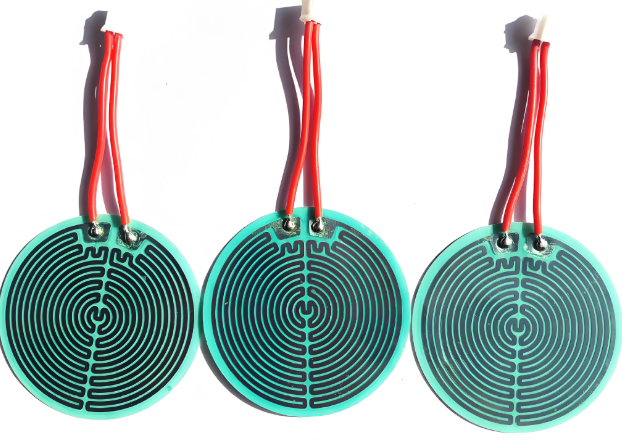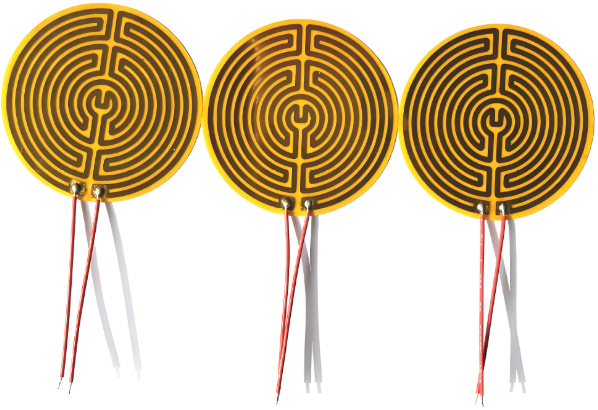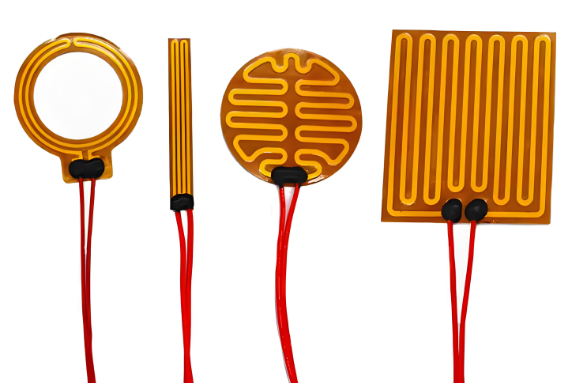PI heaters, or kapton polyimide heaters, are widely used in electronics, automotive, medical devices, and aerospace applications. Their flexibility, thin profile, and uniform heat distribution make them ideal for precise temperature control.
One key question often arises: what voltage should a PI heater use? Choosing the right voltage is crucial. It affects safety, efficiency, heating performance, and the lifespan of the heater.
This article explores the most common PI heater voltages, explains how to select the right voltage for different sizes, and shares practical tips for safe and efficient operation.
When selecting a PI heater, one of the most important parameters is the operating voltage. The voltage directly affects heating speed, safety, and overall performance. In most applications, PI heaters are available in a wide range of voltages, including 3.7V, 5V, 7.2V, 9V, 12V, 24V, 36V, 48V, 55V, 110V, and 220V.
Each voltage suits specific heater sizes and applications:

Selecting a PI heater voltage depends on three main factors:
A simple guideline:
This is because power is proportional to voltage squared divided by resistance (P = V²/R). Smaller heaters with higher resistance heat sufficiently at low voltage. Larger heaters with lower resistance need higher voltage to reach the desired temperature.
Smaller PI heaters generally operate at lower voltages such as 3.7V, 5V, or 12V. These heaters have limited surface area, meaning their power demand is lower.
For instance, a compact heater used in battery-powered devices, sensors, or camera components often works efficiently at 5V or 12V. Lower voltage minimizes power loss, reduces insulation stress, and keeps the circuit design simple.
Additionally, low-voltage heaters are safer for handheld or wearable applications, as they can operate without requiring high-voltage protection measures.

For larger heaters, such as industrial panels, battery packs, or defogging systems, higher voltage levels like 24V, 36V, 48V, 110V, or 220V are ideal.
High voltage allows:
For industrial or laboratory heating systems, using 110V or 220V PI heaters is standard practice, especially when the required heating power exceeds 500W.
Selecting the right voltage involves understanding heater size, power density, and control method. Here’s a simple guide:
For small devices where power consumption and portability are critical, 5V or 12V is usually enough. On the other hand, if you’re heating a large metal plate or industrial component, a higher voltage system is preferred for faster and more uniform heating.
Generally, yes. The heating rate of a PI heater is proportional to its power density, which depends on voltage and resistance.
A higher voltage results in more current flow through the resistive layer, producing heat more rapidly. However, it’s essential to balance the voltage level with the heater’s thermal limit and control system.
For example, if a 12V heater can reach 150°C in 30 seconds, increasing the voltage to 24V may reduce the heating time significantly—but it can also stress the material if not properly controlled. Therefore, when designing a system for fast heating, always integrate a temperature controller or thermostat to maintain safety and stability.
Voltage selection also determines the safety level of the PI heater. Low-voltage designs (below 12V) are typically used in personal or battery-operated equipment, where electrical safety is a top concern.
High-voltage systems (above 110V) require extra insulation, grounding, and protection measures. For industrial setups, engineers often include thermal fuses, sensors, and overload protection to prevent overheating or short circuits.
In short, higher voltage supports higher power, but it must be managed with proper circuit design and quality materials.
There’s a general rule in PI heater design:
The larger the heater size, the higher the voltage required.
This is because large-area heaters have more resistance, and using higher voltage helps maintain a steady power output without excessive current draw.
For example:
This proportional relationship ensures consistent heat distribution while keeping electrical components within safe operating ranges.

Yes. One of the strengths of PI heaters is their customizability. Manufacturers can design heaters for almost any voltage, depending on the user’s requirements.
For example, if your device runs on a 9V lithium battery or a 55V DC source, the heater can be tailored to match that specific input. Custom voltage design helps integrate the heater seamlessly into existing systems without needing converters or regulators.
At Danyu Electronics, we specialize in designing custom PI heaters for both low and high-voltage applications. Whether your project requires compact 5V flexible heaters or large 220V industrial heating films, our engineers evaluate each design for power density, temperature uniformity, and safety compliance.
We provide full support from voltage matching to temperature control system integration, ensuring every heater performs reliably across its lifetime. All our products comply with UL and RoHS certifications and are tested for insulation strength and thermal endurance.
If you need guidance on voltage selection or want a custom-designed PI heating solution, contact us today — we’ll help you create a heater that matches your exact requirements.
1. Can PI heaters be customized for any voltage?
Yes, they can be tailored from 3.7V up to 220V depending on design and application.
2. What happens if a heater receives too high voltage?
It can overheat, damage insulation, or create a short circuit. Voltage must match design specifications.
3. Are high-voltage PI heaters safe?
Yes, when designed with proper insulation, grounding, and temperature control. Polyimide film is highly resistant to heat and voltage.
4. Can a PI heater work with both AC and DC power?
Some designs allow it, but you must confirm with the manufacturer before use.
5. What factors determine the ideal PI heater voltage?
Heater size, resistance, power needs, operating temperature, and available power source all affect voltage selection.
6. Can I Use a 12V PI Heater With a Battery?
Yes, a 12V PI heater can run on a battery, as long as the battery can provide enough current capacity to meet the heater’s power needs. Many portable devices, such as cameras, sensors, and drones, use 12V DC heaters for stable heating. It’s important to ensure the battery discharge rate matches the heater’s wattage; otherwise, heating may slow down or the system may shut off early.
Simply drop your email or phone number in the contact form, and we'll promptly reply you shortly.